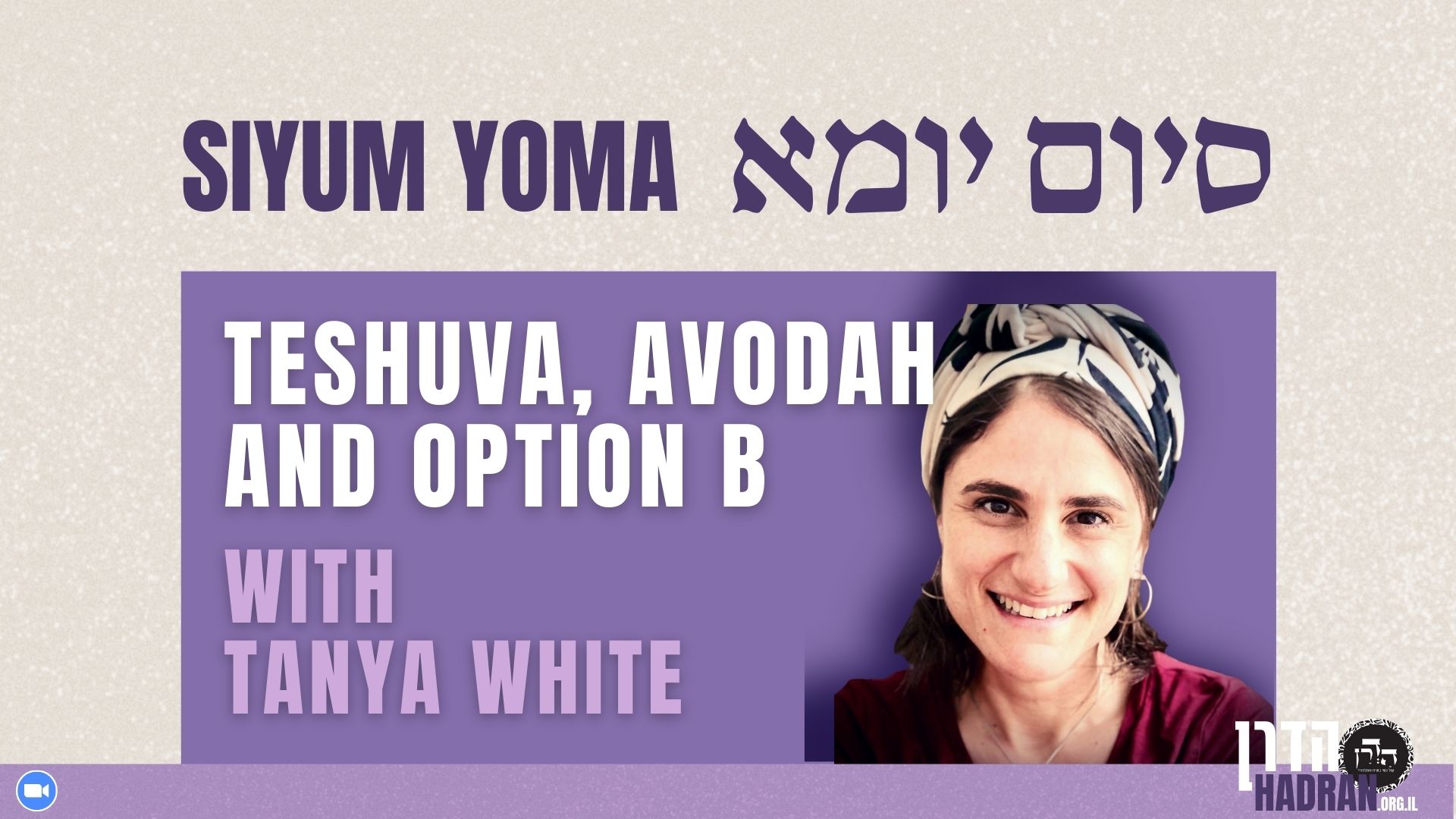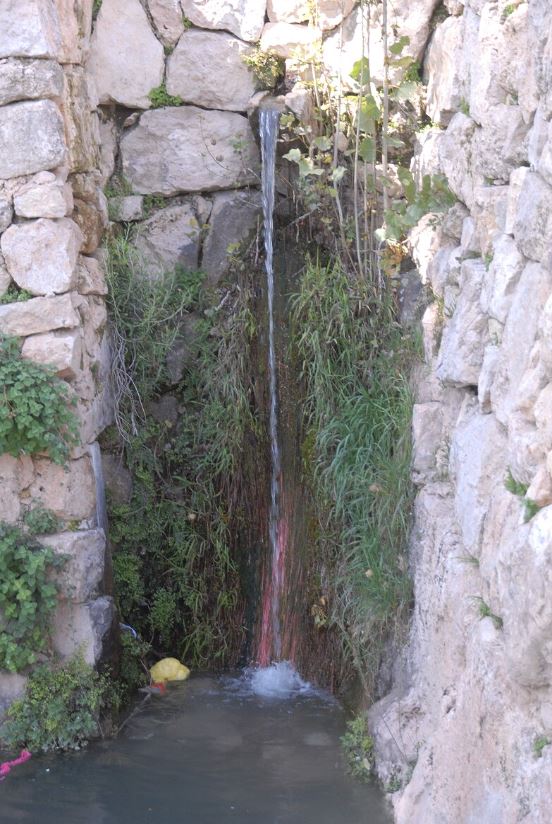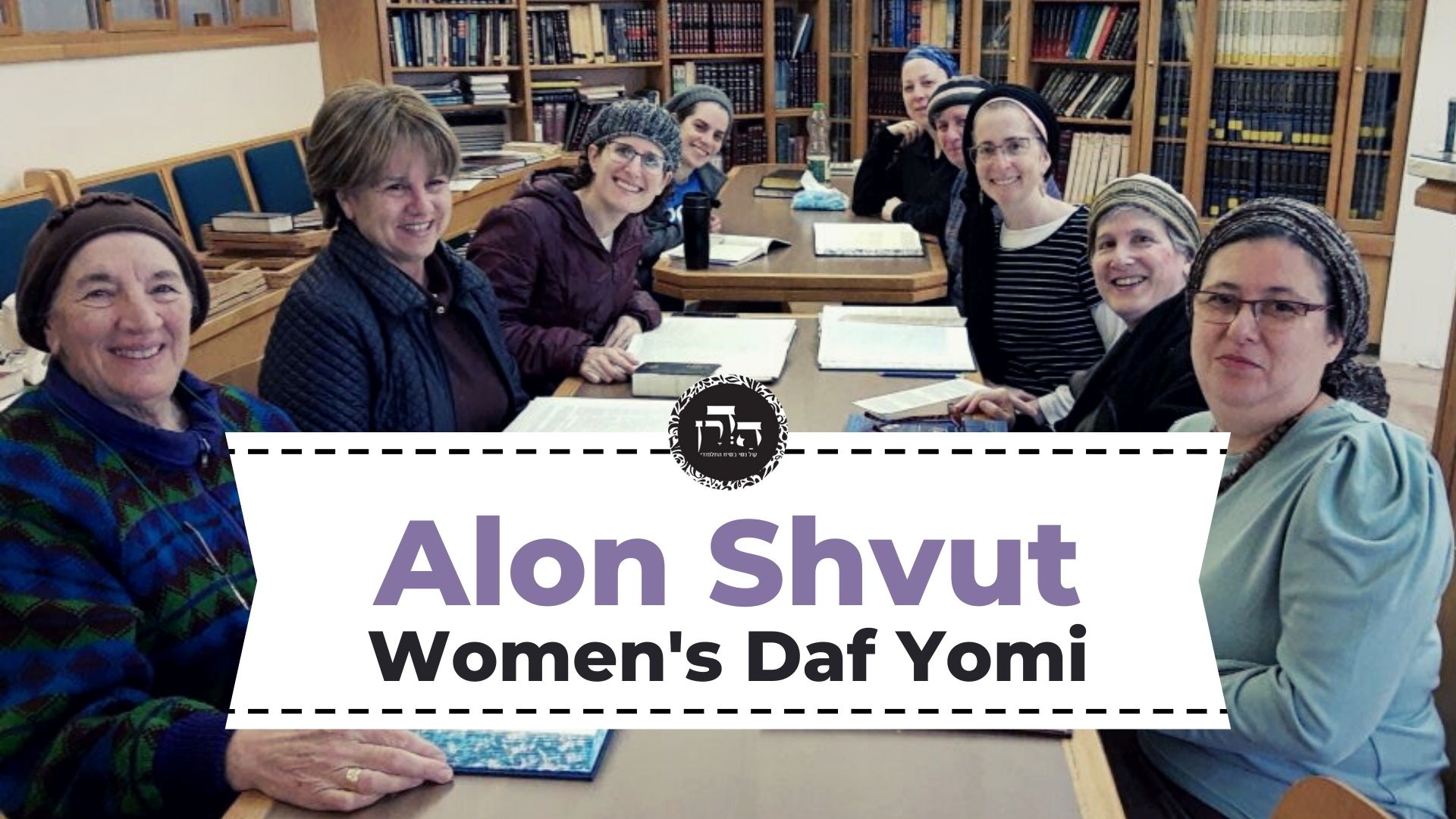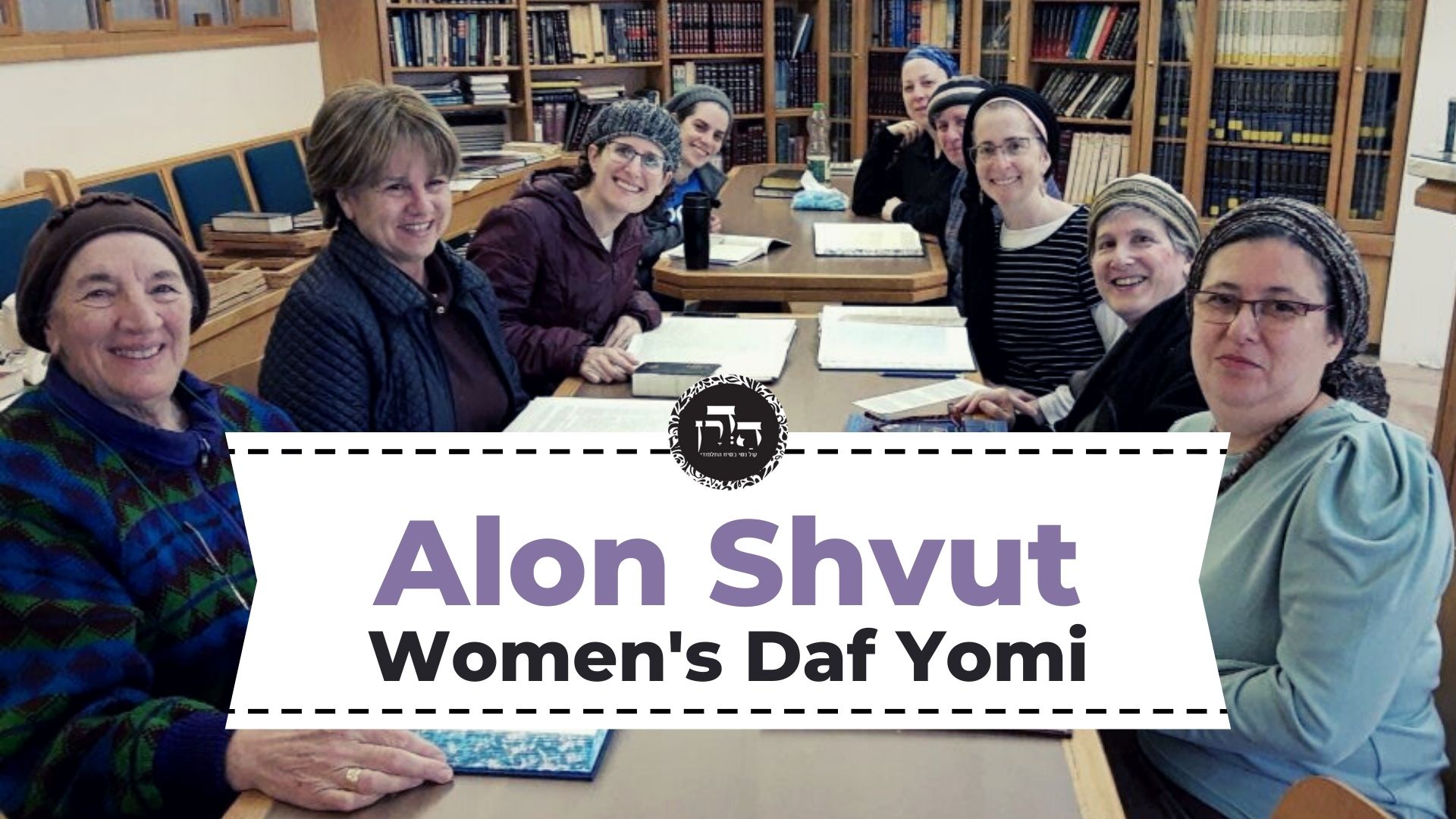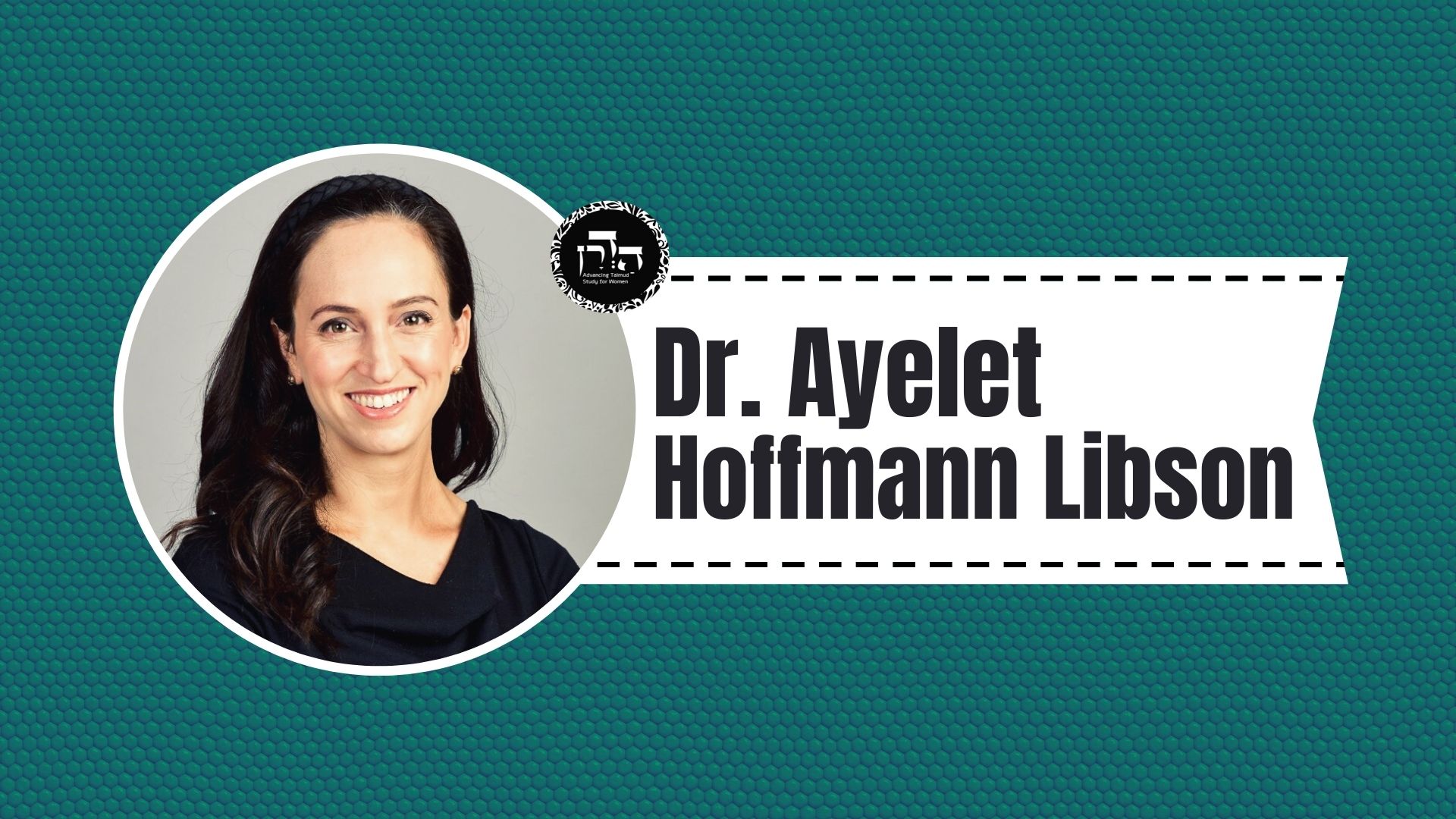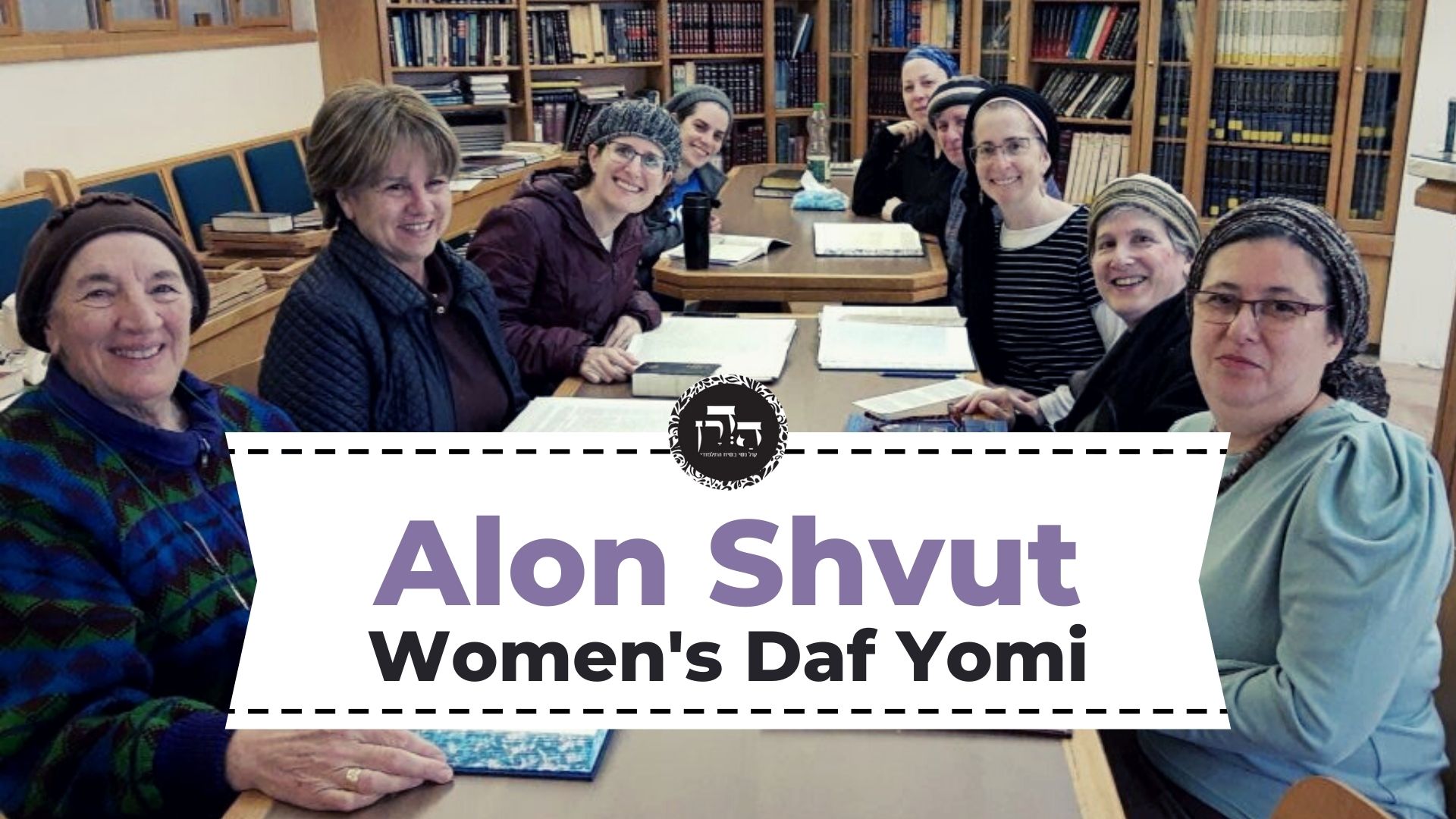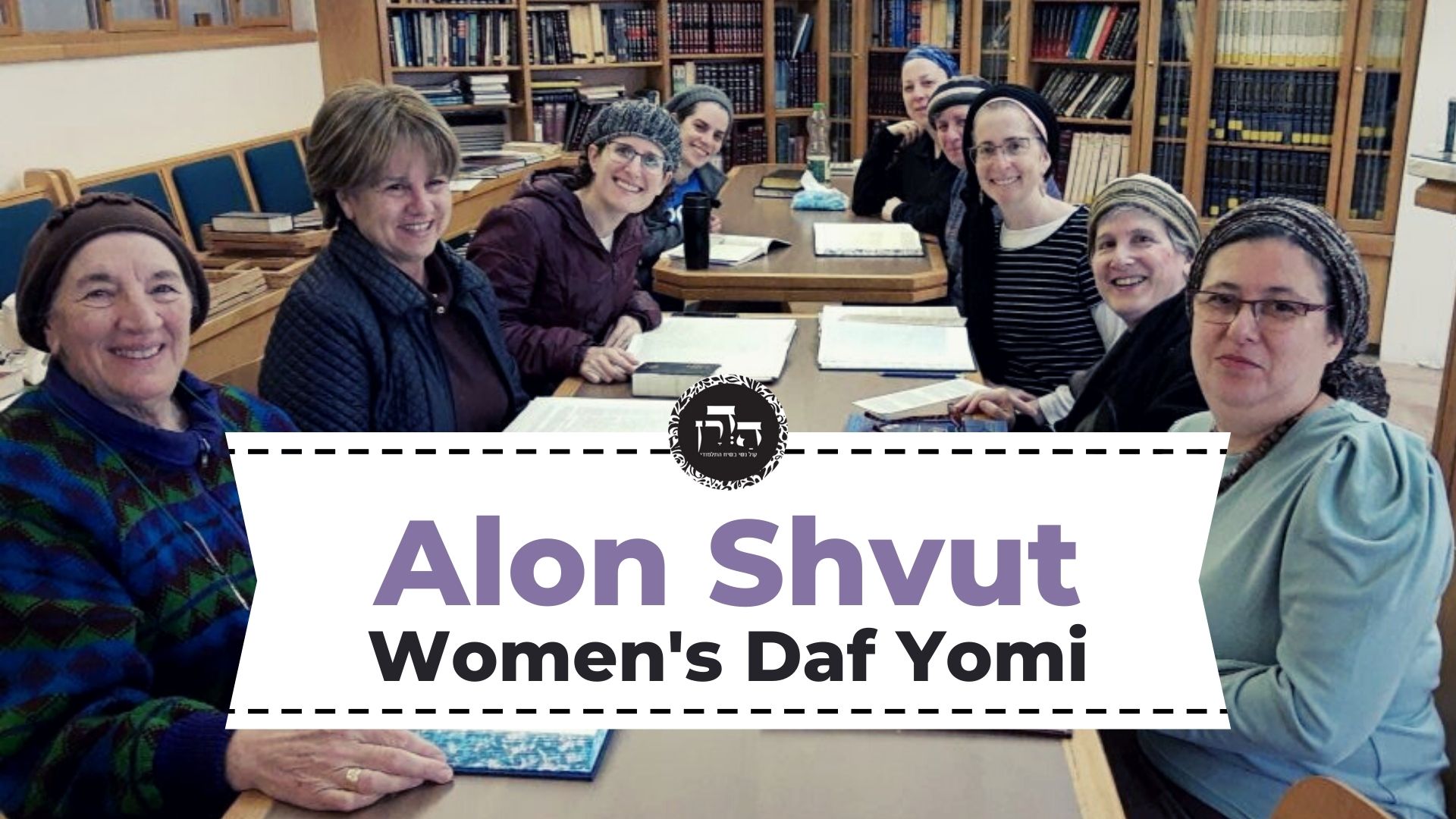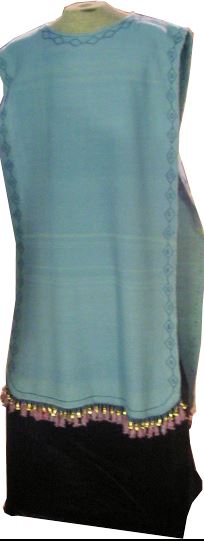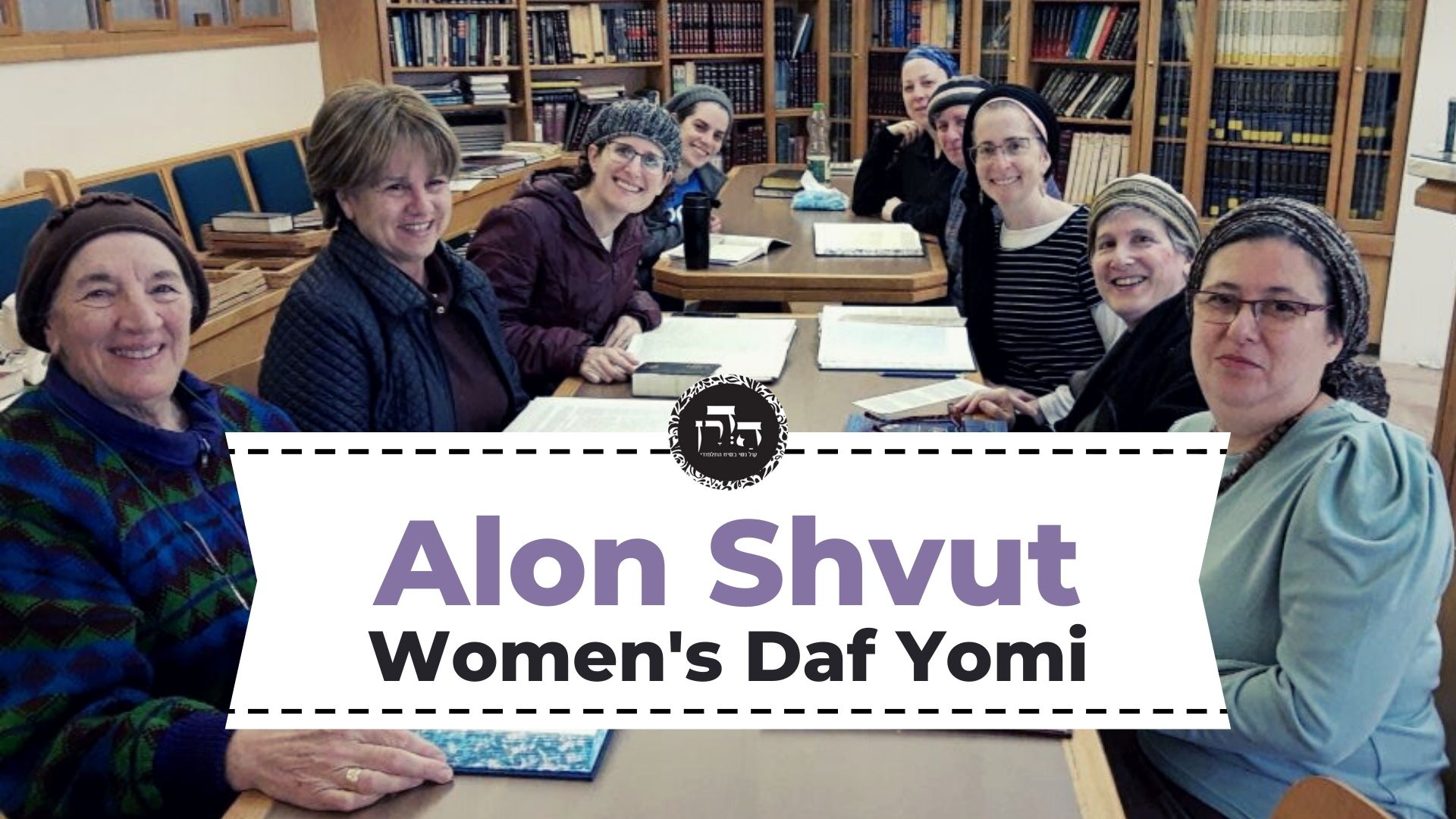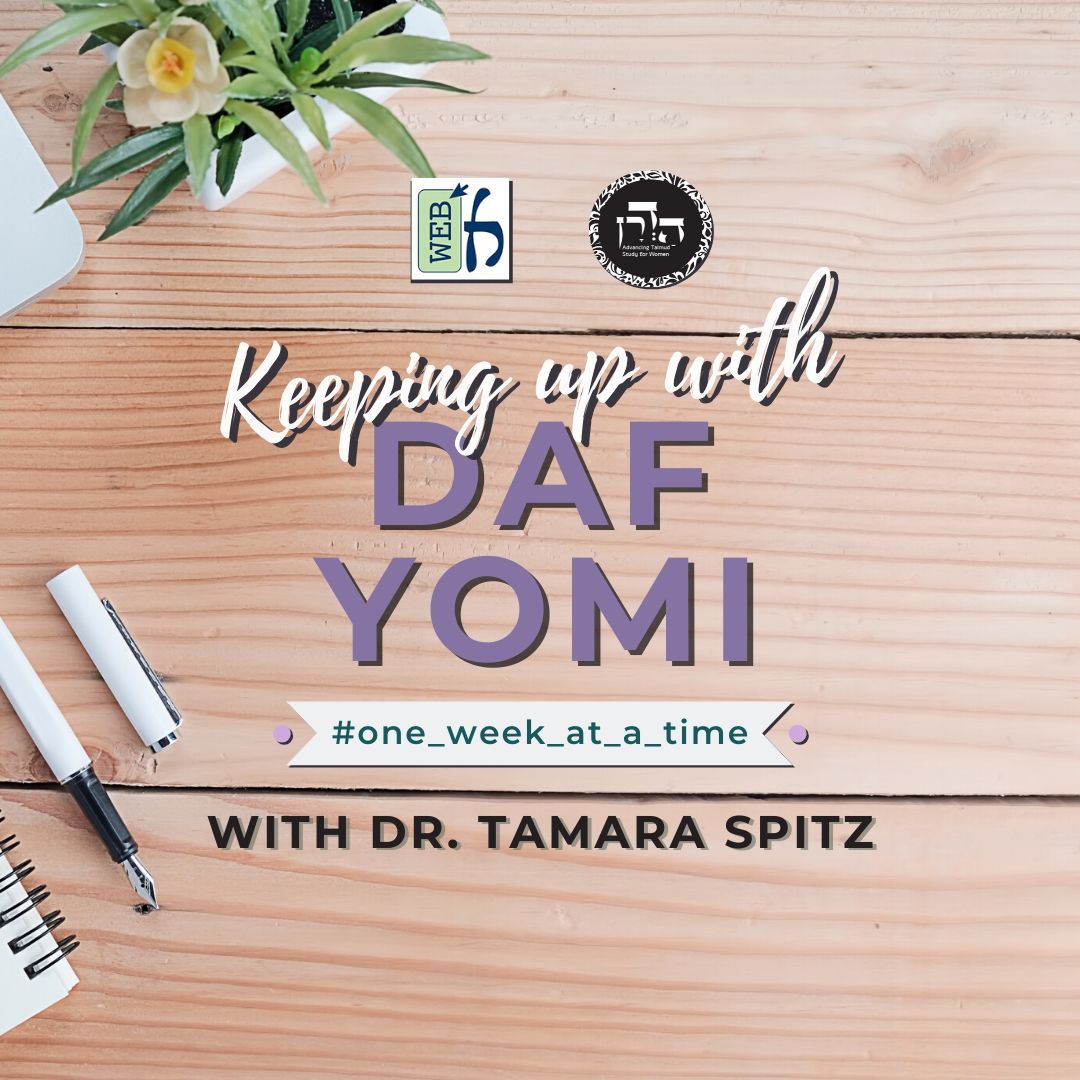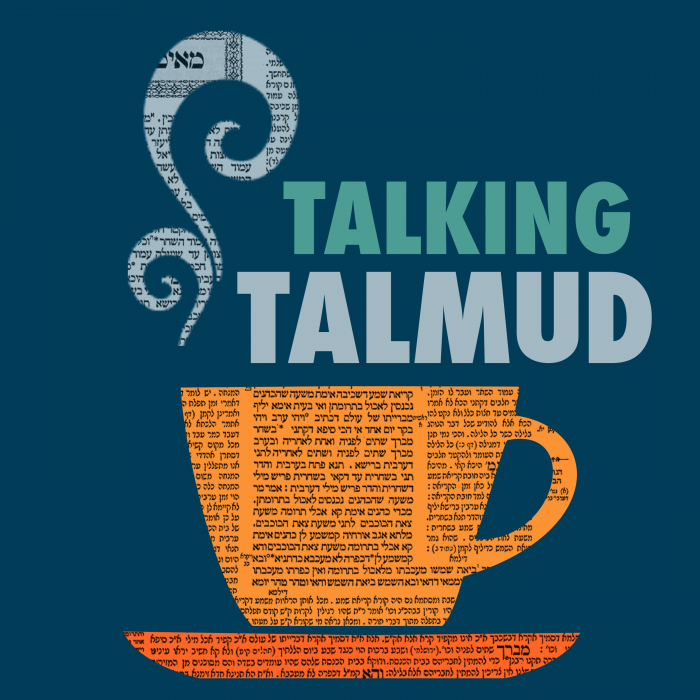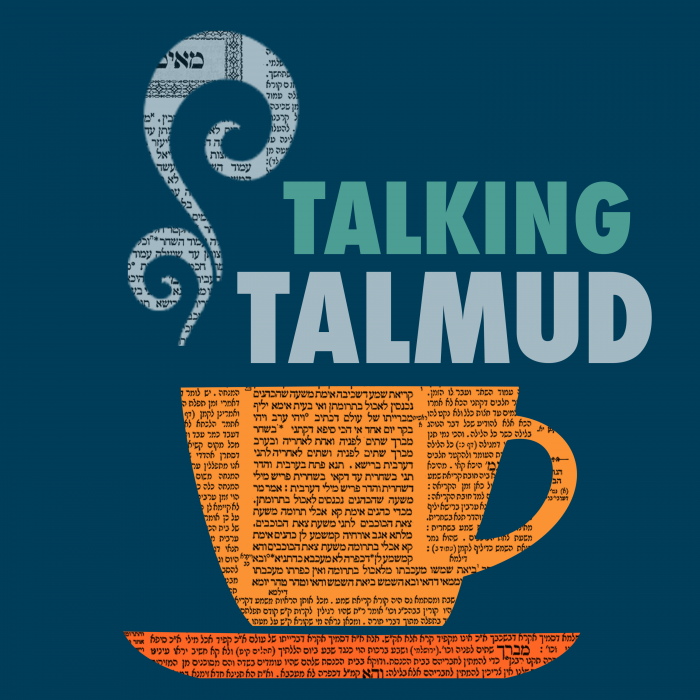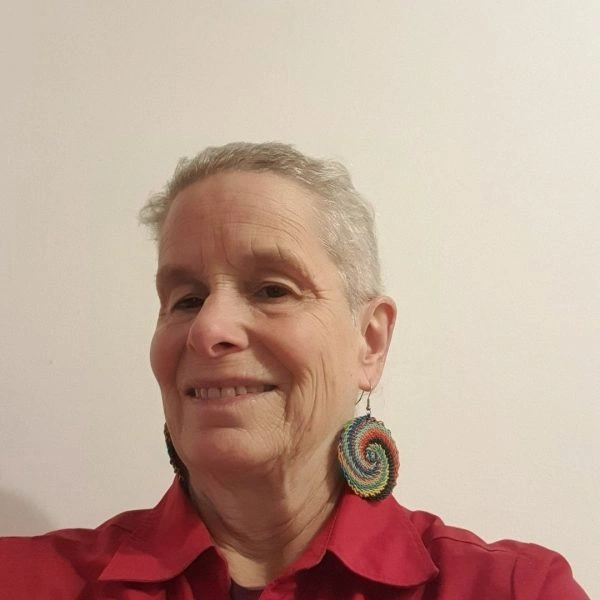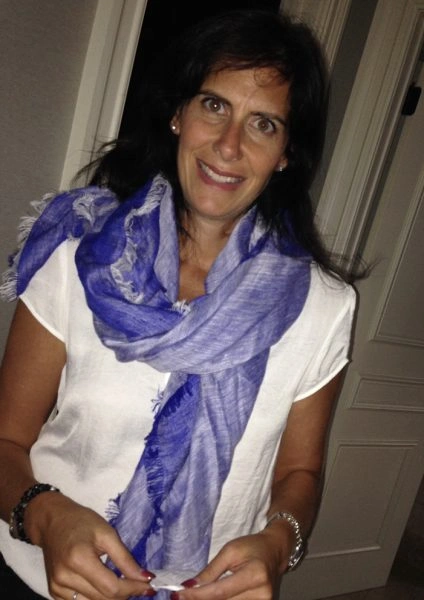Yoma 67
תִּשְׁעִים רִיס, שִׁבְעָה וּמֶחֱצָה לְכׇל מִיל. עַל כׇּל סוּכָּה וְסוּכָּה אוֹמְרִין לוֹ: הֲרֵי מָזוֹן, וַהֲרֵי מַיִם. וּמְלַוִּין אוֹתוֹ מִסּוּכָּה לְסוּכָּה, חוּץ מֵאַחֲרוֹן שֶׁבָּהֶן, שֶׁאֵינוֹ מַגִּיעַ עִמּוֹ לַצּוּק, אֶלָּא עוֹמֵד מֵרָחוֹק וְרוֹאֶה אֶת מַעֲשָׂיו.
with a distance of ninety ris between them. As there are seven and a half ris for each mil, the total distance was twelve mil. At each and every booth, people there say to him: Here is food; here is water, if you need it. And they escort him from booth to booth, except for the last person at the last booth, who does not reach the cliff with him. Rather, he stands from a distance and observes his actions to ensure that he fulfills the mitzva properly.
מֶה הָיָה עוֹשֶׂה? חוֹלֵק לָשׁוֹן שֶׁל זְהוֹרִית חֶצְיוֹ קָשׁוּר בַּסֶּלַע, וְחֶצְיוֹ קָשׁוּר בֵּין שְׁנֵי קַרְנָיו. וּדְחָפוֹ לַאֲחוֹרָיו, וְהוּא מִתְגַּלְגֵּל וְיוֹרֵד. וְלֹא הָיָה מַגִּיעַ לַחֲצִי הָהָר עַד שֶׁנַּעֲשֶׂה אֵבָרִים אֵבָרִים. בָּא וְיָשַׁב לוֹ תַּחַת סוּכָּה אַחֲרוֹנָה עַד שֶׁתֶּחְשַׁךְ. וּמֵאֵימָתַי מְטַמֵּא בְּגָדִים — מִשֶּׁיֵּצֵא חוּץ לְחוֹמַת יְרוּשָׁלַיִם, רַבִּי שִׁמְעוֹן אוֹמֵר: מִשְּׁעַת דְּחִיָּיתוֹ לַצּוּק.
What did the one designated to dispatch the goat do there? He divided a strip of crimson into two parts, half of the strip tied to the rock, and half of it tied between the two horns of the goat. And he pushed the goat backward, and it rolls and descends. And it would not reach halfway down the mountain until it was torn limb from limb. The one designated to dispatch the goat came and sat under the roofing of last booth until it grows dark and only then went home. And from what point are the garments of the man rendered impure, as it is stated that he is impure and his clothes requires immersion? From the moment he emerges outside the wall of Jerusalem. Rabbi Shimon says: His clothes are rendered impure only from the moment that he pushes the goat from the cliff.
גְּמָ׳ תָּנוּ רַבָּנַן: עֶשֶׂר סוּכּוֹת, וּשְׁנֵים עָשָׂר מִילִין הָיוּ, דִּבְרֵי רַבִּי מֵאִיר. רַבִּי יְהוּדָה אוֹמֵר: תֵּשַׁע סוּכּוֹת, וַעֲשָׂרָה מִילִין. רַבִּי יוֹסֵי אוֹמֵר: חָמֵשׁ סוּכּוֹת, וַעֲשָׂרָה מִילִין הָיוּ. וְכוּלָּן עַל יְדֵי עֵירוּב.
GEMARA: The Sages taught: There were ten booths, and the distance between Jerusalem and the cliff was twelve mil; this is the statement of Rabbi Meir. Rabbi Yehuda says: There were nine booths and the distance was ten mil. Rabbi Yosei says: There were five booths and the distance was ten mil, and all of them were able to escort the one leading the goat by establishing a joining of boundaries [eiruv teḥumin] before Yom Kippur, allowing those at each booth to walk to the next booth.
אָמַר רַבִּי יוֹסֵי: סָח לִי אֶלְעָזָר בְּנִי: אִם עַל יְדֵי עֵירוּב — יָכוֹלְנִי לַעֲשׂוֹת אֲפִילּוּ שְׁתֵּי סוּכּוֹת וַעֲשָׂרָה מִילִין.
Rabbi Yosei said: Elazar my son told me: If they were able to walk to the next booth by establishing an eiruv, I could even make two booths suffice for the distance of ten mil. With the proper placement of an eiruv, an individual is permitted to walk a distance of two mil, which is four thousand cubits. Consequently, the people of Jerusalem could escort the one leading the goat a distance of two mil, and the people of the first booth could walk two mil from the booth toward Jerusalem to meet him, and escort him back to their booth. Others at that booth, who had established their eiruv in the direction of the second booth, could then escort the one leading the goat two mil toward the second booth, where he would be met by people from the second booth, who would escort him the remaining two mil to the booth. This booth would be located only two mil from the cliff.
כְּמַאן אָזְלָא הָא דְּתַנְיָא: חוּץ מֵאַחֲרוֹן שֶׁבָּהֶן שֶׁלֹּא הִגִּיעַ עִמּוֹ לַצּוּק אֶלָּא עוֹמֵד מֵרָחוֹק וְרוֹאֶה אֶת מַעֲשָׂיו, כְּמַאן כְּרַבִּי מֵאִיר.
The Gemara comments: In accordance with whose opinion is that which was taught in the baraita: People from all the booths would escort the one leading the goat, except for the last person in the last booth, who did not reach the cliff with him; rather, he stands from a distance and observes his actions? In accordance with whose opinion is this statement? It is in accordance with the opinion of Rabbi Meir, as he holds that the last booth was too far from the cliff for the people there to escort the one leading the goat the entire way.
עַל כׇּל סוּכָּה וְסוּכָּה אוֹמְרִים לוֹ: הֲרֵי מָזוֹן וַהֲרֵי מַיִם. תָּנָא: מֵעוֹלָם לֹא הוּצְרַךְ אָדָם לְכָךְ, אֶלָּא שֶׁאֵינוֹ דּוֹמֶה מִי שֶׁיֵּשׁ לוֹ פַּת בְּסַלּוֹ, לְמִי שֶׁאֵין לוֹ פַּת בְּסַלּוֹ.
It was taught in the mishna: At each and every booth people there say to him: Here is food; here is water, if you need it. It was taught: No man who escorted the goat ever needed this food and water. However, they would offer it to him anyway, because one who has bread in his basket is not similar to one who does not have bread in his basket. One who does not have food available to him is concerned that he will not be able to find any if he really needs it, and he therefore feels his hunger and thirst more acutely.
מֶה הָיָה עוֹשֶׂה — חוֹלֵק לָשׁוֹן שֶׁל זְהוֹרִית. וְנִקְטְרֵיהּ כּוּלֵּיהּ בְּסֶלַע? כֵּיוָן דְּמִצְוָה בְּשָׂעִיר, דִּילְמָא קָדֵים וּמַלְבִּין וּמִיַּתְּבָא דַּעְתֵּיהּ.
§ It was taught in the mishna: What did the person designated to dispatch the goat do there? He divided a strip of crimson into two parts, half of the strip tied to the rock, and half of it tied between the two horns of the goat. The Gemara asks: Let him tie the whole strip to the rock. The Gemara answers: Since it is a mitzva to push the goat from the cliff. If he tied the whole strip to the rock, perhaps it would turn white quickly, and his mind would be eased with the knowledge that the sins of the Jewish people had been forgiven. He would then not fulfill the mitzva of pushing the goat off the cliff. He therefore tied part of it between the horns of the goat and looked to see if it became white. Once he was actively involved with the goat, he would remember to push it off the cliff.
וְנִקְטְרֵיהּ כּוּלֵּיהּ בֵּין קַרְנָיו? זִמְנִין דְּגָמֵישׁ לֵיהּ לְרֵישֵׁיהּ, וְלָאו אַדַּעְתֵּיהּ.
The Gemara asks: If so, let him tie the whole strip between the goat’s horns. The Gemara answers: Sometimes the goat turns its head and he will not know if the strip turns white or not.
תָּנוּ רַבָּנַן: בָּרִאשׁוֹנָה הָיוּ קוֹשְׁרִין לָשׁוֹן שֶׁל זְהוֹרִית עַל פֶּתַח הָאוּלָם מִבַּחוּץ, הִלְבִּין — הָיוּ שְׂמֵחִין, לֹא הִלְבִּין — הָיוּ עֲצֵבִין וּמִתְבַּיְּישִׁין. הִתְקִינוּ שֶׁיִּהְיוּ קוֹשְׁרִין עַל פֶּתַח אוּלָם מִבִּפְנִים. וַעֲדַיִין הָיוּ מְצִיצִין וְרוֹאִין, הִלְבִּין — הָיוּ שְׂמֵחִין, לֹא הִלְבִּין — הָיוּ עֲצֵבִין. הִתְקִינוּ שֶׁיִּהְיוּ קוֹשְׁרִין אוֹתוֹ חֶצְיוֹ בְּסֶלַע וְחֶצְיוֹ בֵּין קַרְנָיו.
The Sages taught: At first they would tie this strip of crimson to the opening of the Entrance Hall of the Temple on the outside. If the strip turned white they would rejoice, as this indicated that their sins had been atoned for. If it did not turn white they would be sad and ashamed. When the Sages saw that people were overly distressed on Yom Kippur, they established that they should tie the strip of crimson to the opening of the Entrance Hall on the inside, since only a few could actually go in to see it. And they would still peek and see: If it turned white, they would rejoice, and if it did not turn white they would be sad. Therefore, the Sages established that they should tie half of the strip to the rock and half of it between the goat’s horns, so that the people would not know what happened to the strip until after the conclusion of Yom Kippur.
אָמַר רַבִּי נַחוּם בַּר פָּפָּא מִשּׁוּם רַבִּי אֶלְעָזָר הַקַּפָּר: בָּרִאשׁוֹנָה הָיוּ קוֹשְׁרִין לָשׁוֹן שֶׁל זְהוֹרִית עַל פֶּתַח אוּלָם מִבִּפְנִים, וְכֵיוָן שֶׁהִגִּיעַ שָׂעִיר לַמִּדְבָּר הָיָה מַלְבִּין, וְיָדְעוּ שֶׁנַּעֲשֵׂית מִצְוָתוֹ. שֶׁנֶּאֱמַר: ״אִם יִהְיוּ חֲטָאֵיכֶם כַּשָּׁנִים כַּשֶּׁלֶג יַלְבִּינוּ״.
Rabbi Naḥum bar Pappa said in the name of Rabbi Elazar HaKappar: At first they would tie the strip of crimson to the opening of the Entrance Hall of the Temple on the inside, and when the goat reached the wilderness, the strip of crimson would turn white, and they knew that the mitzva was fulfilled. The verse alludes to the use of the strip of crimson, as it is stated: “Though your sins be as scarlet, they will become white as snow; though they be red like crimson, they will be as wool” (Isaiah 1:18). This verse indicates that when something scarlet turns white, it is a sign of atonement and forgiveness for the sins of the Jewish people.
לֹא הָיָה מַגִּיעַ לְמַחֲצִית הָהָר. אִיבַּעְיָא לְהוּ: אוֹתָן אֵבָרִים מַה הֵן בַּהֲנָאָה? רַב וּשְׁמוּאֵל. חַד אָמַר: מוּתָּרִין, וְחַד אָמַר: אֲסוּרִין.
§ It was taught in the mishna that the goat would not reach halfway down the mountain before it was torn limb from limb. A dilemma was raised before the Sages: What is the status of those limbs? Is it permitted to derive pleasure from them? Rav and Shmuel disagreed with regard to this issue. One said they are permitted for benefit, and one said they are prohibited.
מַאן דְּאָמַר מוּתָּרִין,
The Gemara explains their reasoning: The one who said they are permitted for benefit
דִּכְתִיב: ״בַּמִּדְבָּר״. וּמַאן דְּאָמַר אֲסוּרִין, דִּכְתִיב: ״גְּזֵירָה״.
established his opinion based on a verse, as it is written: “And the goat shall bear upon it all their iniquities to a land which is cut off; and he shall let go the goat in the wilderness” (Leviticus 16:22). The concluding phrase, “in the wilderness,” is unnecessary, and indicates that the goat shall be available for anyone to use, similar to a wilderness. And the one who said they are prohibited based his opinion on the same verse, as it is written, “cut off” [gezeira], which indicates a prohibition.
וּמַאן דְּאָמַר אֲסוּרִין, הַאי ״מִדְבָּר״ מַאי עָבֵיד לֵיהּ? מִיבְּעֵי לֵיהּ לְכִדְתַנְיָא: ״הַמִּדְבָּרָה״, ״הַמִּדְבָּרָה״, ״בַּמִּדְבָּר״ — לְרַבּוֹת נוֹב וְגִבְעוֹן, שִׁילֹה, וּבֵית עוֹלָמִים.
The Gemara asks: And the one who said they are prohibited, what does he do with this term wilderness, i.e., what does he derive from it? The Gemara answers: He needs it for that which was taught in a baraita: There are three expressions used to describe the location of the procedure with the scapegoat: “Into the wilderness” (Leviticus 16:10), “into the wilderness” (Leviticus 16:21), and “in the wilderness” (Leviticus 16:22), to include Nov and Givon and Shiloh, when the Tabernacle was located there, and the eternal Temple. The mitzva of the scapegoat applied during the time periods when communal offerings were sacrificed in any of these locations.
וְאִידַּךְ, הַאי ״גְּזֵירָה״ מַאי עָבֵיד לֵיהּ? מִיבְּעֵי לֵיהּ לְכִדְתַנְיָא: ״גְּזֵירָה״ — אֵין גְּזֵירָה אֶלָּא חֲתוּכָה. דָּבָר אַחֵר: אֵין גְּזֵירָה אֶלָּא דָּבָר הַמִּתְגַּזֵּר וְיוֹרֵד.
The Gemara asks: And the other, what does he do with this word gezeira? The Gemara answers: He needs it for that which was taught in a baraita with regard to the word gezeira: Gezeira means nothing other than cut. That is, he must send the goat away to a place cut up by rocks standing upright and sticking out. Alternatively, gezeira is referring to nothing other than something that breaks apart and falls, a reference to the goat, which is torn limb from limb.
דָּבָר אַחֵר: ״גְּזֵירָה״, שֶׁמָּא תֹּאמַר מַעֲשֵׂה תֹהוּ הוּא, תַּלְמוּד לוֹמַר: ״אֲנִי ה׳״, אֲנִי ה׳ גְּזַרְתִּיו, וְאֵין לְךָ רְשׁוּת לְהַרְהֵר בָּהֶן.
Alternatively, the word gezeira is written lest you say the procedure of the scapegoat is a meaningless act, since what sanctity and atonement is achieved in sending the goat to Azazel and pushing it from the cliff? Therefore, the verse states: “I am the Lord” (Leviticus 18:5), i.e., I, the Lord, decreed it [gezartiv], and you have no right to question it.
אָמַר רָבָא: מִסְתַּבְּרָא כְּמַאן דְּאָמַר מוּתָּרִין, לֹא אָמְרָה תּוֹרָה ״שַׁלַּח״ לְתַקָּלָה.
Having clarified the reasoning of each opinion, the Gemara concludes its discussion of whether the limbs of the goat are permitted for benefit. Rava said: It is reasonable to rule in accordance with the one that said the limbs of the goat are permitted, since the Torah did not say: “And send the goat” to cause mishap. Once the man pushes the goat off the cliff, he is no longer responsible for it. Therefore, if it were prohibited to derive benefit from the goat’s remains, the mitzva itself could lead to a mishap if someone were to find the goat’s remains and make use of them.
תָּנוּ רַבָּנַן: ״עֲזָאזֵל״ — שֶׁיְּהֵא עַז וְקָשֶׁה. יָכוֹל בַּיִּשּׁוּב, תַּלְמוּד לוֹמַר: ״בַּמִּדְבָּר״, וּמִנַּיִן שֶׁבְּצוּק? תַּלְמוּד לוֹמַר: ״גְּזֵירָה״. תַּנְיָא אִידַּךְ: ״עֲזָאזֵל״ — קָשֶׁה שֶׁבֶּהָרִים, וְכֵן הוּא אוֹמֵר: ״וְאֶת אֵילֵי הָאָרֶץ לָקָח״.
§ The Sages taught: The word Azazel indicates that the cliff the goat is pushed from should be rough and hard. I might have thought that it may be located in a settled area. Therefore, the verse states: “In the wilderness.” And from where does one derive that the goat is pushed from a cliff? The verse states “gezeira,” indicating an area that is sharp, like a cliff. It was taught in another baraita: Azazel is a reference to the hardest mountain, and so it says: “And the mighty [eilei] of the land he took away” (Ezekiel 17:13). Azazel is interpreted as azaz-el, with the term el connoting something rough and hard.
תָּנָא דְּבֵי רַבִּי יִשְׁמָעֵאל: ״עֲזָאזֵל״ — שֶׁמְּכַפֵּר עַל מַעֲשֵׂה עוּזָּא וְעַזָּאֵל.
The school of Rabbi Yishmael taught: Azazel is so called because it atones for the actions of Uzza and Azael. These are the names of “sons of God” who sinned with “daughters of men” (Genesis 6:2) and thereby caused the world to sin during the generation of the Flood.
תָּנוּ רַבָּנַן, ״אֶת מִשְׁפָּטַי תַּעֲשׂוּ״ — דְּבָרִים שֶׁאִלְמָלֵא (לֹא) נִכְתְּבוּ דִּין הוּא שֶׁיִּכָּתְבוּ, וְאֵלּוּ הֵן: עֲבוֹדָה זָרָה, וְגִלּוּי עֲרָיוֹת, וּשְׁפִיכוּת דָּמִים, וְגָזֵל, וּבִרְכַּת הַשֵּׁם.
The Gemara cites another baraita related to the scapegoat. The Sages taught with regard to the verse: “You shall do My ordinances, and you shall keep My statutes to follow them, I am the Lord your God” (Leviticus 18:4), that the phrase: My ordinances, is a reference to matters that, even had they not been written, it would have been logical that they be written. They are the prohibitions against idol worship, prohibited sexual relations, bloodshed, theft, and blessing God, a euphemism for cursing the Name of God.
״אֶת חוּקּוֹתַי תִּשְׁמְרוּ״ — דְּבָרִים שֶׁהַשָּׂטָן מֵשִׁיב עֲלֵיהֶן, וְאֵלּוּ הֵן: אֲכִילַת חֲזִיר, וּלְבִישַׁת שַׁעַטְנֵז, וַחֲלִיצַת יְבָמָה, וְטׇהֳרַת מְצוֹרָע, וְשָׂעִיר הַמִּשְׁתַּלֵּחַ. וְשֶׁמָּא תֹּאמַר מַעֲשֵׂה תוֹהוּ הֵם, תַּלְמוּד לוֹמַר: ״אֲנִי ה׳״, אֲנִי ה׳ חֲקַקְתִּיו, וְאֵין לְךָ רְשׁוּת לְהַרְהֵר בָּהֶן.
The phrase: And you shall keep my statutes, is a reference to matters that Satan and the nations of the world challenge because the reason for these mitzvot are not known. They are: The prohibitions against eating pork; wearing garments that are made from diverse kinds of material, i.e., wool and linen; performing the ḥalitza ceremony with a yevama, a widow who must participate in a levirate marriage or ḥalitza; the purification ceremony of the leper; and the scapegoat. And lest you say these have no reason and are meaningless acts, therefore the verse states: “I am the Lord” (Leviticus 18:4), to indicate: I am the Lord, I decreed these statutes and you have no right to doubt them.
אֵימָתַי מְטַמֵּא בְּגָדִים. תָּנוּ רַבָּנַן: הַמְשַׁלֵּחַ מְטַמֵּא בְּגָדִים, וְאֵין הַשּׁוֹלֵחַ אֶת הַמְשַׁלֵּחַ מְטַמֵּא בְּגָדִים.
§ It was taught in the mishna that the tanna’im disagreed about from what point the garments of the man who leads the scapegoat are rendered impure. The Sages taught in a baraita: The garments of the one who dispatches the goat are rendered impure, but the garments of the one who dispatches the dispatcher, e.g., those who accompany him, are not rendered impure.
יָכוֹל מִשֶּׁיֵּצֵא חוּץ לְחוֹמַת עֲזָרָה — תַּלְמוּד לוֹמַר: ״הַמְשַׁלֵּחַ״. אִי ״הַמְשַׁלֵּחַ״, יָכוֹל עַד שֶׁיַּגִּיעַ לַצּוּק — תַּלְמוּד לוֹמַר: ״וְהַמְשַׁלֵּחַ״. הָא כֵּיצַד: מִשֶּׁיֵּצֵא חוּץ לְחוֹמַת יְרוּשָׁלַיִם, דִּבְרֵי רַבִּי יְהוּדָה.
One might have thought that as soon as he leaves the wall of the Temple courtyard he becomes ritually impure. Therefore, the verse states: “He that dispatched” (Leviticus 16:26), to teach that he does not contract impurity until his journey has begun. On the other hand, if the verse had simply stated: He that dispatched, one might have thought he does not become impure until he reaches the cliff. Therefore, the verse states: “And he that dispatched,” with the inclusive term “and.” How is this to be understood? His garments are rendered impure only when he emerged outside the wall of Jerusalem. This is the statement of Rabbi Yehuda.
רַבִּי יוֹסֵי אוֹמֵר: ״עֲזָאזֵל וְכִבֶּס״ — עַד שֶׁהִגִּיעַ לַצּוּק. רַבִּי שִׁמְעוֹן אוֹמֵר: ״וְהַמְשַׁלֵּחַ אֶת הַשָּׂעִיר לַעֲזָאזֵל יְכַבֵּס בְּגָדָיו״, זוֹרְקוֹ בְּבַת רֹאשׁ וּמְטַמֵּא בְּגָדִים.
Rabbi Yosei says that the verse states: “And he that dispatched the goat to Azazel shall wash” (Leviticus 16:26), which indicates that his garments are not rendered impure until he has reached Azazel, i.e., the cliff. Rabbi Shimon says: His garments are rendered impure only when he pushes the goat from the cliff, as it says: “And he that dispatched the goat to Azazel shall wash his clothes” (Leviticus 16:26), to indicate that he throws it headlong and only then, once he has fulfilled the mitzva, his garments are rendered impure.
מַתְנִי׳ בָּא לוֹ אֵצֶל פַּר וְשָׂעִיר הַנִּשְׂרָפִין, קְרָעָן, וְהוֹצִיא אֶת אֵימוּרֵיהֶן, נְתָנָן בְּמָגֵיס וְהִקְטִירָן עַל גַּבֵּי הַמִּזְבֵּחַ.
MISHNA: After the High Priest passed the goat to the man tasked with dispatching the goat, he came next to the bull and the goat that were to be burned. He tore their flesh but was not required to cut it into pieces, and removed the portions of the offering consumed on the altar and placed them in a large bowl [magis] and burned them on the altar.
קְלָעָן בְּמִקְלָעוֹת וְהוֹצִיאָן לְבֵית הַשְּׂרֵיפָה. וּמֵאֵימָתַי מְטַמְּאִין בְּגָדִים — מִשֶּׁיֵּצְאוּ חוּץ לְחוֹמַת הָעֲזָרָה. רַבִּי שִׁמְעוֹן אוֹמֵר: מִשֶּׁיַּצִּית הָאוּר בְּרוּבָּן.
He interwove and bound the bull and the goat together into braids as one mass. They were placed in that way upon two poles and carried by four people who took them out to the place designated for burning, outside of Jerusalem. And at what point do the bull and goat render the garments of those who carried them impure, as it is written: “And he who burns them shall wash his garments” (Leviticus 16:28)? They render the garments impure from the moment that they emerged outside the wall of the Temple courtyard. Rabbi Shimon says: They render the garments impure from the moment that the fire has ignited in most of the bull and the goat.
גְּמָ׳ ״וְהִקְטִירָן״ סָלְקָא דַּעְתָּךְ? אֶלָּא אֵימָא: לְהַקְטִירָן עַל גַּבֵּי מִזְבֵּחַ.
GEMARA: It was taught in the mishna that the High Priest removed the portions of the offering consumed on the altar and burned them on the altar. The Gemara expresses surprise: Would it enter your mind to say he burned them? He would not burn them right away, since he had to perform other services first. Rather, say that he placed them in a large bowl in order to burn them on the altar later.
״קְלָעָן בְּמִקְלָעוֹת״. אָמַר רַבִּי יוֹחָנָן: כְּמִין קְלִיעָה. תָּנָא: לֹא הָיָה מְנַתְּחָן נִיתּוּחַ בְּשַׂר עוֹלָה, אֶלָּא עוֹר עַל גַּבֵּי בָּשָׂר. מְנָא הָנֵי מִילֵּי? דְּתַנְיָא: רַבִּי אוֹמֵר: נֶאֱמַר כָּאן עוֹר וּבָשָׂר וָפֶרֶשׁ, וְנֶאֱמַר לְהַלָּן עוֹר וּבָשָׂר וָפֶרֶשׁ,
It was taught in the mishna that the High Priest interwove and bound the bull and the goat together into braids as one mass before taking them to be burned. Rabbi Yoḥanan said: He made them like a braid, whose parts are interwoven. It was taught: He would not dissect the bull and goat in the manner of the dissection of the flesh of a burnt-offering, where the animal is skinned and then cut into parts. Rather, he would leave the skin on top of the flesh and would cut the animal into pieces without skinning it. The Gemara asks: From where are these matters derived? As it was taught in a baraita that Rabbi Yehuda HaNasi says: It is stated here with regard to the bull and goat, skin and flesh and dung (Leviticus 16:27), and it is stated below, with regard to the bull sin-offerings that are burned, skin and flesh and dung (Leviticus 4:11).



